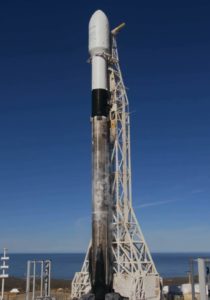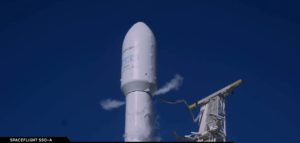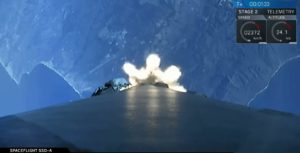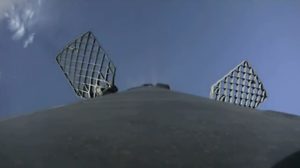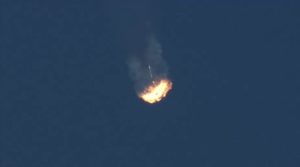

News
SpaceX Falcon 9 Block 5 booster nails third launch and landing in 7 months
Following a bit less than three weeks of relentless launch delays and scrubs, SpaceX has successfully launched and landed a Falcon 9 Block 5 booster for the third time, marking a critical milestone for the company’s long-held aspiration of building and operating rockets that can begin to approach the reliability, reusability, and affordability of modern aircraft.
While SpaceX still has a long way to go before Falcon 9 (or BFR) can hope to touch airliners, this triple launch and landing of a single Falcon 9 booster is the biggest step yet towards that critical goal. Having now completed three launches in an impressively routine fashion, Falcon 9 B1046 may be on a fast track to become the first SpaceX rocket to launch four or more times in the near future.
Falcon 9 first stage has landed on the Just Read the Instructions droneship—completing this rocket booster’s third launch and landing this year. pic.twitter.com/DXqT7KH9sM
— SpaceX (@SpaceX) December 3, 2018
What exactly goes into the process of preparing Falcon 9 Block 5 boosters for reused launches is not entirely clear, but it can be said with some confidence that Block 5 (or SpaceX’s comfort level) is not quite to the point that a booster has flown with literally zero significant refurbishment between launches. It’s possible that the average 3-4 months Block 5 boosters currently spend between launches is filled solely with inspections, nondestructive testing, and perhaps some mild cleaning in certain areas, but it’s certainly not as probable as the need for some mildly to moderately significant repairs or part replacements.
Ultimately, this is a transparent nitpick that ignores the simple reality that SpaceX is already reusing rockets more rapidly and efficiently than any other entity in history, in which NASA’s Space Shuttle is truly the only orbital-class rocket that can lay claim to technically faster launch turnaround times, although Shuttle refurbishment relied on a massive infrastructure that cost a minimum of $5-10M every day. At the absolute least, SpaceX’s inspection and refurbishment of Falcon 9 Block 5 boosters is somewhere between 10 and 20 times cheaper than NASA’s best Shuttle refurbishment.
Four launches and beyond
While SpaceX webcast hosts and company engineers Lauren Lyons and Kate Tice didn’t specifically mention the possibility, it’s very likely that – should post-recovery inspections uncover no major surprises – Falcon 9 B1046’s successful third launch and landing could pave the way for a future of 4, 5, 6, or more launches as 2018 comes to a close and 2019 nears the horizon. As SpaceX’s reusability engineers and technicians begin to gain confidence with how Falcon 9’s Block 5 upgrade behaves after multiple launches and landings, the time needed between flight-proven launches of the same booster should continue to rapidly decrease over the next 6-12 months. According to COO and President Gwynne Shotwell, Block 5 boosters are already outperforming expectations.
Shotwell: Falcon 9 first stages come back in much better shape than anticipated. Have refurbishment time down to four weeks; goal is still a one-day turnaround next year. #WSBW
— Jeff Foust (@jeff_foust) September 11, 2018
Finally, Lyons noted that SpaceX had, in fact, sent Mr. Steven out into the Pacific Ocean for the fairing recovery ship’s first catch attempt in more than four months, and said that the company would provide updates about that attempt later on. Stay tuned to find out how that fairing recovery attempt went!
Mr. Steven is stationed in the Pacific, as SpaceX will attempt to catch and recover the fairing this mission. pic.twitter.com/A7aBSJoFfc
— SpaceX (@SpaceX) December 3, 2018
For prompt updates, on-the-ground perspectives, and unique glimpses of SpaceX’s rocket recovery fleet check out our brand new LaunchPad and LandingZone newsletters!

Elon Musk
SpaceX issues statement on Starship V3 Booster 18 anomaly
The incident unfolded during gas-system pressure testing at the company’s Massey facility in Starbase, Texas.

SpaceX has issued an initial statement about Starship Booster 18’s anomaly early Friday. The incident unfolded during gas-system pressure testing at the company’s Massey facility in Starbase, Texas.
SpaceX’s initial comment
As per SpaceX in a post on its official account on social media platform X, Booster 18 was undergoing gas system pressure tests when the anomaly happened. Despite the nature of the incident, the company emphasized that no propellant was loaded, no engines were installed, and personnel were kept at a safe distance from the booster, resulting in zero injuries.
“Booster 18 suffered an anomaly during gas system pressure testing that we were conducting in advance of structural proof testing. No propellant was on the vehicle, and engines were not yet installed. The teams need time to investigate before we are confident of the cause. No one was injured as we maintain a safe distance for personnel during this type of testing. The site remains clear and we are working plans to safely reenter the site,” SpaceX wrote in its post on X.
Incident and aftermath
Livestream footage from LabPadre showed Booster 18’s lower half crumpling around the liquid oxygen tank area at approximately 4:04 a.m. CT. Subsequent images posted by on-site observers revealed extensive deformation across the booster’s lower structure. Needless to say, spaceflight observers have noted that Booster 18 would likely be a complete loss due to its anomaly.
Booster 18 had rolled out only a day earlier and was one of the first vehicles in the Starship V3 program. The V3 series incorporates structural reinforcements and reliability upgrades intended to prepare Starship for rapid-reuse testing and eventual tower-catch operations. Elon Musk has been optimistic about Starship V3, previously noting on X that the spacecraft might be able to complete initial missions to Mars.
Investor's Corner
Tesla analyst maintains $500 PT, says FSD drives better than humans now
The team also met with Tesla leaders for more than an hour to discuss autonomy, chip development, and upcoming deployment plans.

Tesla (NASDAQ:TSLA) received fresh support from Piper Sandler this week after analysts toured the Fremont Factory and tested the company’s latest Full Self-Driving software. The firm reaffirmed its $500 price target, stating that FSD V14 delivered a notably smooth robotaxi demonstration and may already perform at levels comparable to, if not better than, average human drivers.
The team also met with Tesla leaders for more than an hour to discuss autonomy, chip development, and upcoming deployment plans.
Analysts highlight autonomy progress
During more than 75 minutes of focused discussions, analysts reportedly focused on FSD v14’s updates. Piper Sandler’s team pointed to meaningful strides in perception, object handling, and overall ride smoothness during the robotaxi demo.
The visit also included discussions on updates to Tesla’s in-house chip initiatives, its Optimus program, and the growth of the company’s battery storage business. Analysts noted that Tesla continues refining cost structures and capital expenditure expectations, which are key elements in future margin recovery, as noted in a Yahoo Finance report.
Analyst Alexander Potter noted that “we think FSD is a truly impressive product that is (probably) already better at driving than the average American.” This conclusion was strengthened by what he described as a “flawless robotaxi ride to the hotel.”
Street targets diverge on TSLA
While Piper Sandler stands by its $500 target, it is not the highest estimate on the Street. Wedbush, for one, has a $600 per share price target for TSLA stock.
Other institutions have also weighed in on TSLA stock as of late. HSBC reiterated a Reduce rating with a $131 target, citing a gap between earnings fundamentals and the company’s market value. By contrast, TD Cowen maintained a Buy rating and a $509 target, pointing to strong autonomous driving demonstrations in Austin and the pace of software-driven improvements.
Stifel analysts also lifted their price target for Tesla to $508 per share over the company’s ongoing robotaxi and FSD programs.
Elon Musk
SpaceX Starship Version 3 booster crumples in early testing
Photos of the incident’s aftermath suggest that Booster 18 will likely be retired.
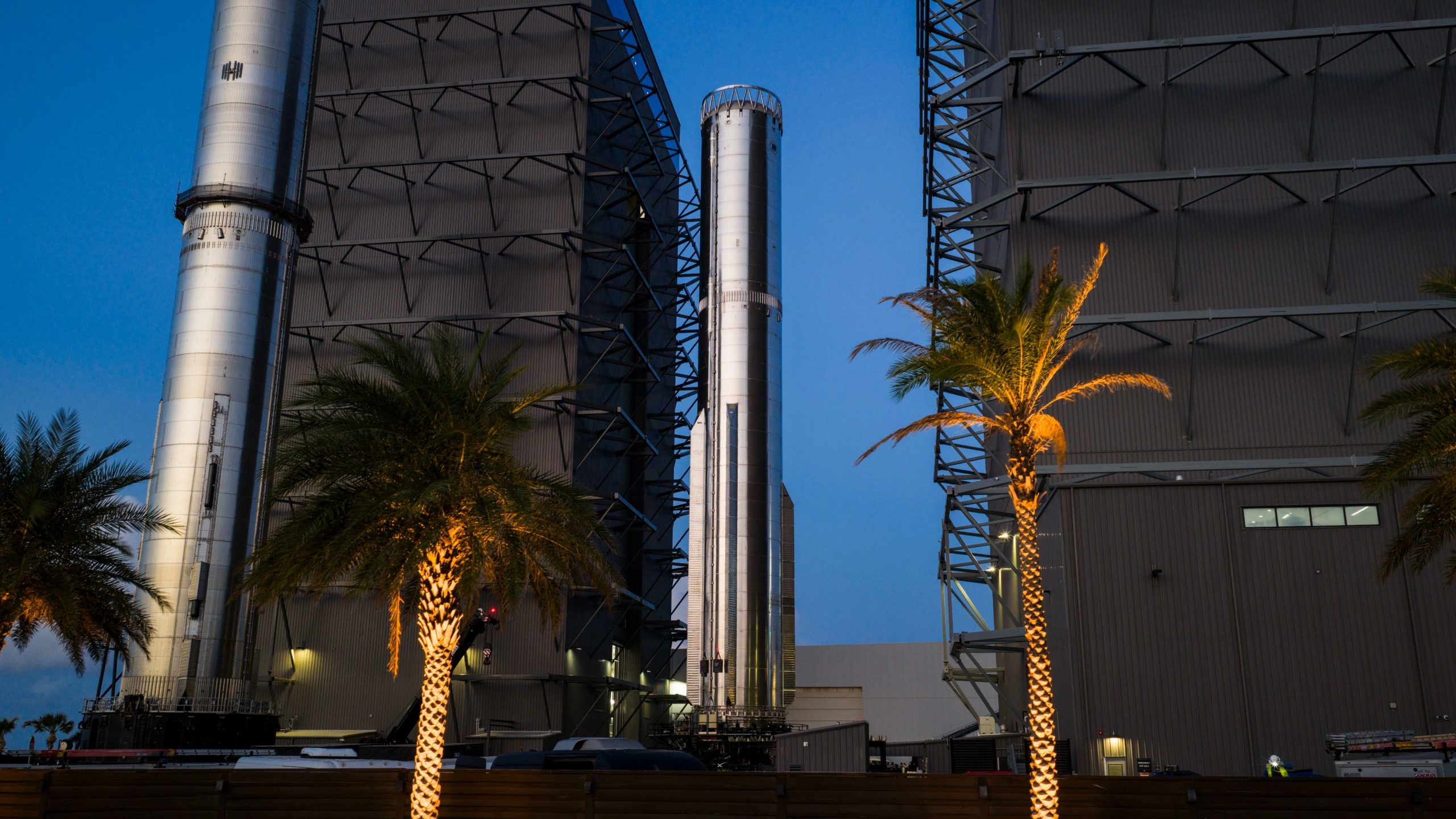
SpaceX’s new Starship first-stage booster, Booster 18, suffered major damage early Friday during its first round of testing in Starbase, Texas, just one day after rolling out of the factory.
Based on videos of the incident, the lower section of the rocket booster appeared to crumple during a pressurization test. Photos of the incident’s aftermath suggest that Booster 18 will likely be retired.
Booster test failure
SpaceX began structural and propellant-system verification tests on Booster 18 Thursday night at the Massey’s Test Site, only a few miles from Starbase’s production facilities, as noted in an Ars Technica report. At 4:04 a.m. CT on Friday, a livestream from LabPadre Space captured the booster’s lower half experiencing a sudden destructive event around its liquid oxygen tank section. Post-incident images, shared on X by @StarshipGazer, showed notable deformation in the booster’s lower structure.
Neither SpaceX nor Elon Musk had commented as of Friday morning, but the vehicle’s condition suggests it is likely a complete loss. This is quite unfortunate, as Booster 18 is already part of the Starship V3 program, which includes design fixes and upgrades intended to improve reliability. While SpaceX maintains a rather rapid Starship production line in Starbase, Booster 18 was generally expected to validate the improvements implemented in the V3 program.
Tight deadlines
SpaceX needs Starship boosters and upper stages to begin demonstrating rapid reuse, tower catches, and early operational Starlink missions over the next two years. More critically, NASA’s Artemis program depends on an on-orbit refueling test in the second half of 2026, a requirement for the vehicle’s expected crewed lunar landing around 2028.
While SpaceX is known for diagnosing failures quickly and returning to testing at unmatched speed, losing the newest-generation booster at the very start of its campaign highlights the immense challenge involved in scaling Starship into a reliable, high-cadence launch system. SpaceX, however, is known for getting things done quickly, so it would not be a surprise if the company manages to figure out what happened to Booster 18 in the near future.
